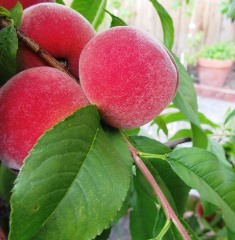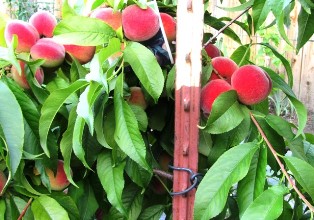A Potpourri of Tips and Tricks to Benefit Your Garden
Today’s blog is filled with miscellaneous tips and tricks that benefit the garden and also the environment.
1. Grow a cover crop–also known as green manure crop, planting a cover crop such as grasses or legumes after you’ve harvested your summer bounty can stop weeds from claiming the bed and also prevent soil erosion.
2. Mulch your garden paths–use pine needles, leaves, or old black-and-white newspapers, which are now often printed with soy ink.
3. Save empty jugs of tea, juice, milk–rinse and cut out the bottoms to use the jugs as hot-cap environments for tender seedlings.
4. Recycle gently used gray water–pour it on fruit trees and ornamental plants; but do not pour it on acid loving plants (gray water is naturally alkaline) so do not use it on leafy vegetables and root crops that are to be consumed uncooked.
5. Thin vegetable seedlings and hanging fruit–abundance has a down side since crowded plants don’t thrive as well or bulb as big (like onions). When fruit on fruit trees is thinned, the remaining fruit tends to grow larger.
6. Recycle plastic tubs–whether they once held yogurt, margarine, or soup from the health food store, turn them upside down in the garden to keep melons off the ground (prevents them from rotting)
Growing Peaches in Northern California
What could be more sublime that eating a juicy, ripe peach freshly plucked from the tree? If you have space in your Northern California backyard or garden, consider planting one or more peach trees.
In the Bay Area, peaches are fairly easy to grow. Depending on the cultivar, they are heavy bearing. We planted a classic gold Elberta and some early-bearing Desert Gold peaches two years ago. Already, both trees are loaded with peaches.
I ate a Desert Gold peach off the tree today. It was ripe on one side and still a little crunchy on the other. Another week, and they’ll all be ready for a cobbler. The Elberta peaches will not be ripe until late July or early August.
Peaches are best eaten fresh, in my opinion. But they also freeze well or you can make them into jam, preserve them with spices, or blend up a batch of chutney or baby food. Your best bet is to plant peach trees during bare root season because they are cheaper and more plentiful then. Right now (second week of May), nurseries have replanted their bare root trees into pots.
One of my favorite nurseries in the Bay Area is Alden Lane Nursery in Livermore, California. The nursery carries hundreds of fruit and nut trees and thousands of roses. The oak trees on the property are 300 years old and one has a community of honeybees dwelling in the tree. It’s a great time to visit the nursery. For a list of offers, see http://www.aldenlane.com/media/softprogram.pdf.
Peaches need a lot of sunshine, high nitrogen fertilizer, and water to perform optimally. They also suffer from peach leaf curl, a fungus that can be easily treated with a fixed-copper spray. Dormant oil will control scale if they get it. The trees will live for 15 to 20 years.
Prolific producers, peaches need fruit thinning early on to yield larger fruit and avoid branch breakage. See the University of California’s Master Gardener program tip sheet for more information at http://homeorchard.ucanr.edu/Fruits_&_Nuts/Peach/.
If you love peaches, it’s not too late to plant a tree in your backyard for a bountiful crop of late spring/summer fruit.
 Facebook
Facebook Goodreads
Goodreads LinkedIn
LinkedIn Meera Lester
Meera Lester Twitter
Twitter






